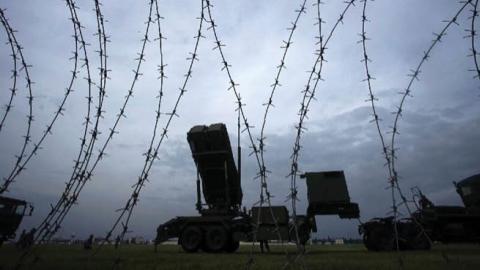The government of Japan’s recent decision to scrap its Aegis Ashore ballistic missile defense installations raises concerns about the Japan-U.S. alliance. It is also sure to generate continued protests from missile defense advocates who argue the system is needed to protect Japan from a North Korean ballistic missile attack and can do so more efficiently than today’s approach of using a flotilla of Aegis destroyers.
The critics are partly right, as the program’s cost doubled from the government’s original optimistic estimates. However, at about $1.8 billion each, the planned Aegis Ashore facilities are less expensive than the combined cost of the three or four $1.6 billion Aegis destroyers they partially replace.
Japan’s defense minister cited cost as one reason for the cancellation, but a more significant stumbling block was worry from communities around the Aegis Ashore sites that missile debris could fall on their homes and that high-power radars could harm nearby inhabitants.
Japan’s defense minister cited cost as one reason for the cancellation, but a more significant stumbling block was worry from communities around the Aegis Ashore sites that missile debris could fall on their homes and that high-power radars could harm nearby inhabitants.
Although some of these concerns may be unfounded, the Abe government should use this pause to follow its Medium Term Defense Program and reallocate the Aegis Ashore investment toward a “comprehensive air and missile defense capability” that addresses the full range of threats facing Japan.
Aegis Ashore could economically protect wide areas of Japan from ballistic missiles. However, its capacity is constrained by the size of its missile magazine, and as a fixed site, it is susceptible to attack. North Korea now likely has enough ballistic missiles as well as decoys and other penetration aids to overwhelm the 24 interceptors in the planned Aegis Ashore magazines, particularly if defenders shoot multiple interceptors at each incoming missile. The Chinese or Russian militaries could launch much larger attacks, as well as strike the Aegis Ashore site itself.
The Japanese Ministry of Defense is exploring alternatives to the current Aegis Ashore program. For example, programming SM-3 interceptors to drop their boosters over the ocean and placing radars closer to the coast could reduce impacts on the surrounding communities. The MoD is also considering placing Aegis Ashore installations on inexpensive vessels or barges.
These approaches could address public concerns but would likely be more expensive than the current program.
Instead of spending increasing amounts in an ultimately unsuccessful attempt to prevent successful ballistic missile attacks, the MoD should embrace a comprehensive approach to air and missile defense that acknowledges Japan is in a salvo competition with China and other adversaries. To gain an advantage in this competition that might deter an attack, Japan will need an approach that generates timely warning and targeting, defeats both cruise and ballistic missiles, makes better decisions faster, and is resilient in the face of missiles that will inevitably leak through.
A new Japanese air and missile defense architecture should consist of five key elements, some of which already exist, lowering the cost for its implementation. Funding that would have gone to Aegis Ashore could pay for much of the new systems needed for this portfolio:
* A distributed network of mobile and fixed passive and active sensors, including Japan’s Aegis destroyers; U.S. satellites and AN/TPY-2 radars; and new or planned long-endurance unmanned aircraft carrying infrared sensors for early warning of ballistic or hypersonic missile launches.
* Air and missile interceptors, increasing the emphasis on short- and medium-range weapons that are smaller, less expensive and can be fielded in greater capacities. The architecture should incorporate current and planned SM-3s and SM-6s at sea to protect large swaths of Japan and intercept enemy aircraft; existing Patriot Advanced Capability-3 interceptors to defend important areas like cities or bases; new point-defense systems such as the Rolling Airframe Missile that can protect key facilities; and future boost-phase air-to-air interceptors that could engage North Korean missiles shortly after launch.
* New, energy-based defenses such as high-powered microwaves, electronic warfare jammers and decoys, or lasers around important targets that can bring an infinite magazine to complement short-range interceptors and point defenses.
* Resilient command-and-control systems that can fuse data, including with U.S. forces, and efficiently use defenses by engaging threats with the least-costly weapon.
* Passive defenses for military forces and facilities such as camouflage, concealment and deception, as well as selective hardening and reconstitution that challenge adversary targeting and ensure forces can fight through attacks.
Attack operations are often proposed as a complement or replacement for defensive systems. However, Japanese strike capabilities are unlikely to be used preemptively against North Korea and would lack the capacity to substantially degrade Chinese or Russian missile launchers or command and control.
Japan’s government should embrace the opportunity created by its suspension of Aegis Ashore to adopt a comprehensive approach that protects Japan from air and missile threats by deterring attacks through a combination of complementary defensive systems, effective command and control, and resilience. Otherwise, the Japanese MoD will continue chasing an elusive ballistic missile shield without substantially improving Japan’s security.
Read in Defense News


















